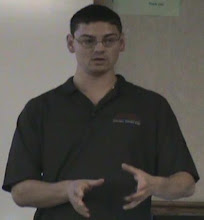
One of the most cited benefits of a quantum computer is that it can factor, therefore breaking many current public key encryption systems. That makes this recent paper by Kawachi, Koshiba, Nishimura, and Yamakami certainly interesting: a quantum version of public key encryption. Here's a brief article in MIT Technology Review, and the paper on arXiv. The abstract:
We introduce a computational problem of distinguishing between two specific quantum states as a new cryptographic problem to design a quantum cryptographic scheme that is "secure" against any polynomial-time quantum adversary. Our problem, QSCDff, is to distinguish between two types of random coset states with a hidden permutation over the symmetric group of finite degree. This naturally generalizes the commonly-used distinction problem between two probability distributions in computational cryptography. As our major contribution, we show that QSCDff has three properties of cryptographic interest: (i) QSCDff has a trapdoor; (ii) the average-case hardness of QSCDff coincides with its worst-case hardness; and (iii) QSCDff is computationally at least as hard as the graph automorphism problem in the worst case. These cryptographic properties enable us to construct a quantum public-key cryptosystem, which is likely to withstand any chosen plaintext attack of a polynomial-time quantum adversary. We further discuss a generalization of QSCDff, called QSCDcyc, and introduce a multi-bit encryption scheme that relies on similar cryptographic properties of QSCDcyc.
(Image from the paper.)

